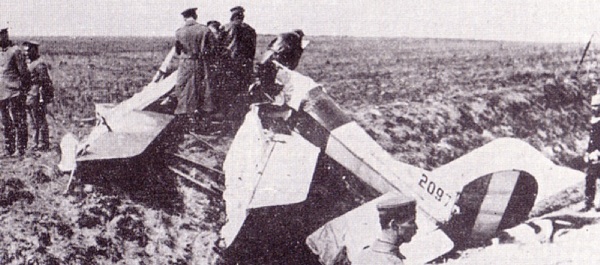
Since his high school days, Jan Goldstein thought that an in-depth documentary on the pilots and planes of World War I "would be the coolest thing to watch." Now a restaurateur and self-described "scruffy bass player from rural Connecticut," he finally grew tired of waiting for someone else to make his dream documentary and decided to do it himself. The result, The Great War in the Air: Aces of the Western Front, proved so popular on YouTube that it was recently released as a double-DVD set. The documentary covers in great detail the history of World War I aviation and the men and machines that defined aerial combat from 1914 to 1918. Richard A. Martin interviewed producer and director Goldstein, a true renaissance man, for HistoryNet.com to learn how what began as a "hobby project" became so popular.
I don’t own this story. It belongs to all those brave kids who lived and died so many years ago.
Richard Martin: How did you get involved in filmmaking?
Jan Goldstein: I had opened The Rain Desert, my first restaurant/nightclub and was very interested in producing a show for public access cable TV that would spotlight the various musical acts that graced our stage and hopefully promote the restaurant as well. I had never produced any video before, but my online homework led me to buy a second-hand Sony Vaio tower already set up to make video with Adobe Premiere installed.
I had no background or training in using Premiere, and the learning curve was incredibly steep. During those first months I really racked my brain trying to figure things out and continuously gave myself new tasks and tricks to further my learning. Over the next couple of years I produced around 40 hours of original programming for two of the cable networks here in eastern Connecticut.
RM: Is The Great War in the Air your first documentary?
JG: Yes. I began toying with the idea of doing the documentary pretty quickly after I started doing my cable show. After my first season was complete I felt I’d become competent enough with the software that I was ready to seriously begin thinking about how I’d make my The Great War in the Air.
RM: What led you to write, produce and direct a documentary on World War I aviation?
JG: Mostly the fact that no such film existed. Since my high school days I had thought that such a film would be the coolest thing to watch. I never intended to make the film myself, but in the end I got tired of waiting for someone else to tackle the project and decided to give it a whirl. I really just wanted to tell the story of my childhood heroes, illustrated as authentically as I could make it with period photographs. It was really just a hobby project intended for my own amusement, but as I worked on it I’d show segments to various friends and could see them getting “sucked in” to the story.
At the start of The Great War, the aeroplane had barely progressed beyond the machine the Wright Brothers had taken aloft a scant 11 years earlier. By the time of the Armistice, dozens of specialized types had been developed and put into operations: high performance fighters, ground attack machines, heavy bombers and more. The speed at which new types went from the drawing board to combat and then finally withdrawn as obsolete is absolutely dizzying. This is truly a period of history like no other that came before or after.
RM: How long did the production process take?
JG: Nine months, start to finish. The script was written over five months. Although my days with the restaurant were remarkably long, I made it a point to sit and write a little every single morning before I left home. It didn’t matter if it was a couple paragraphs or just a couple lines, I forced myself to write every single day.
The script started with an outline that I had pretty much created off the top of my head. I knew the story pretty well and had definite ideas on which elements I considered essential. Once my outline was complete I wrote out the documentary, trying as best as I could to get the facts right. It wasn’t unusual to have four or five books opened at any given time while I weighed what the different historians and participants had to say.
[continued on next page]




